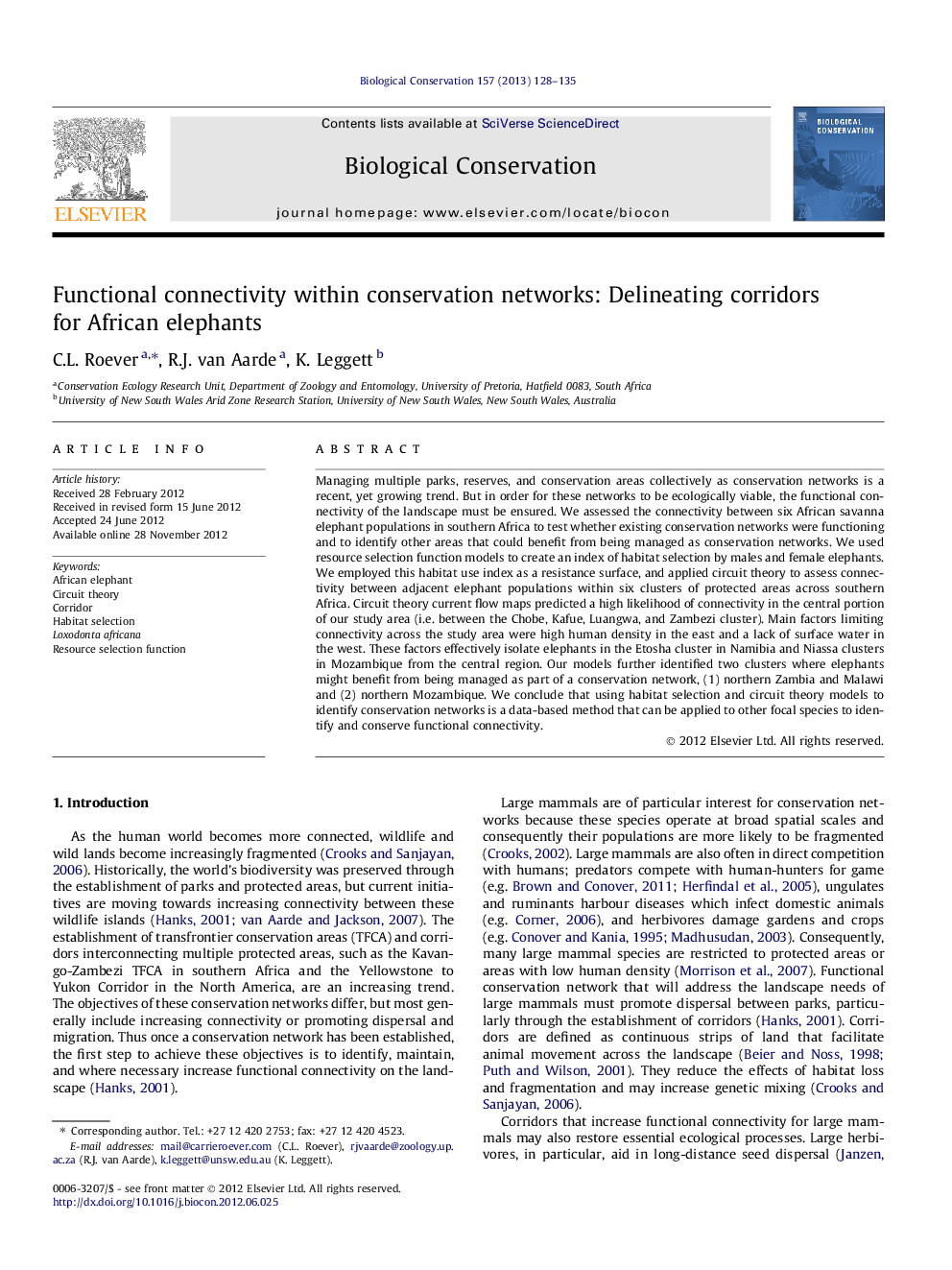| کد مقاله | کد نشریه | سال انتشار | مقاله انگلیسی | نسخه تمام متن |
|---|---|---|---|---|
| 4385195 | 1617944 | 2013 | 8 صفحه PDF | دانلود رایگان |

Managing multiple parks, reserves, and conservation areas collectively as conservation networks is a recent, yet growing trend. But in order for these networks to be ecologically viable, the functional connectivity of the landscape must be ensured. We assessed the connectivity between six African savanna elephant populations in southern Africa to test whether existing conservation networks were functioning and to identify other areas that could benefit from being managed as conservation networks. We used resource selection function models to create an index of habitat selection by males and female elephants. We employed this habitat use index as a resistance surface, and applied circuit theory to assess connectivity between adjacent elephant populations within six clusters of protected areas across southern Africa. Circuit theory current flow maps predicted a high likelihood of connectivity in the central portion of our study area (i.e. between the Chobe, Kafue, Luangwa, and Zambezi cluster). Main factors limiting connectivity across the study area were high human density in the east and a lack of surface water in the west. These factors effectively isolate elephants in the Etosha cluster in Namibia and Niassa clusters in Mozambique from the central region. Our models further identified two clusters where elephants might benefit from being managed as part of a conservation network, (1) northern Zambia and Malawi and (2) northern Mozambique. We conclude that using habitat selection and circuit theory models to identify conservation networks is a data-based method that can be applied to other focal species to identify and conserve functional connectivity.
► Circuit theory flow maps were used to predict connectivity for elephant populations.
► Elephants in Chobe, Kafue, and the Zambezi have a high probability for connectivity.
► Etosha and Niassa are effectively isolated by lack of water and high human density.
► Luangwa and Niassa elephants may benefit from being managed as conservation networks.
Journal: Biological Conservation - Volume 157, January 2013, Pages 128–135